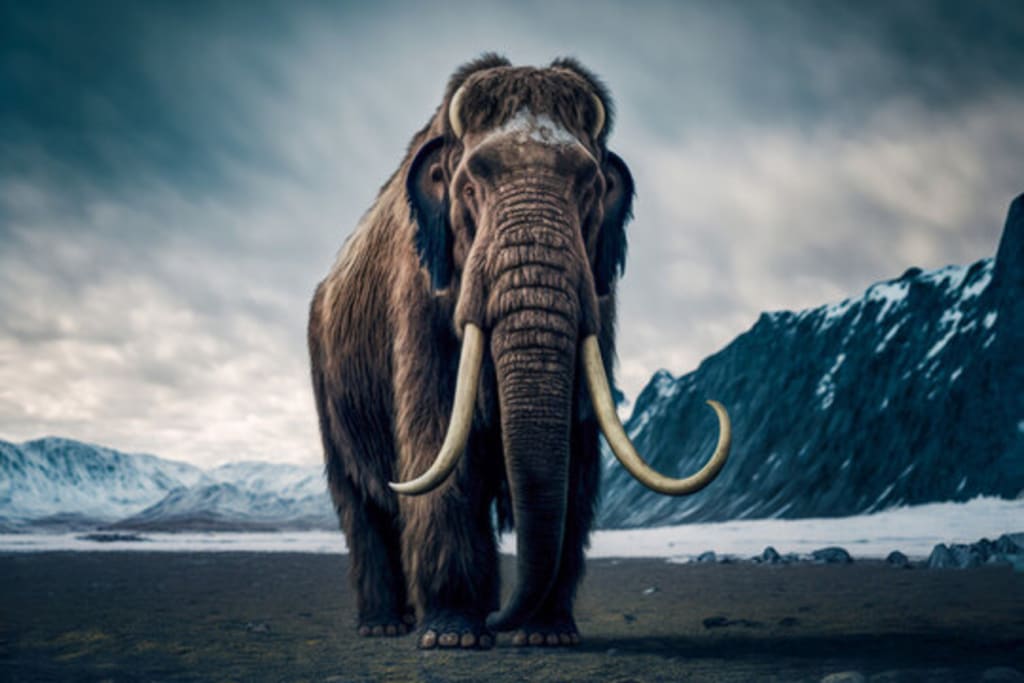
Title: Unearthing the Mammoth: Revival of an Archaic Giant
First of all,
The mammoth has long captivated experts and the general public as a recognizable emblem of the Pleistocene era. Tens of thousands of years ago, these massive, shaggy creatures ruled the cold expanses of the Northern Hemisphere as they roamed the Earth. Although these giants disappeared from the globe millions of years ago, the intriguing prospect of reviving them has been heightened by developments in genetic science. In this piece, we explore the science underlying the resurrection of mammoths, the moral questions it poses, and the possible effects on conservation and our comprehension of ancient ecosystems.
The Science of Mammoth Resurrection: Old DNA taken from preserved specimens discovered in permafrost areas like Siberia holds the secret to the science of mammoth resurrection. Even though the DNA in these fossils is frequently damaged and fragmented, new developments in genetic editing and sequencing technologies, like CRISPR, present a chance to piece together the genome of the mammoth. Scientists can pinpoint the genetic variations causing the mammoth's distinctive characteristics, including its shaggy coat and long, curved tusks, by comparing the DNA of the mammoth with that of the Asian elephant, which is its closest living relative.
Ethical Issues: There are several ethical issues that arise when considering the possibility of reviving extinct creatures. Some express worries about the welfare of any revived animals and their possible effects on current ecosystems, while others contend that the revival of mammoths may take focus and funding away from conservation efforts for endangered species. Furthermore, there is a concern that de-extinction would pave the way for more contentious and ambitious endeavors like the resuscitation of extinct human relatives like the Neanderthals.
Conservation and Ecosystem Impact: Mammoth resurrection proponents contend that returning these animals to their natural habitats may aid in the restoration of ecosystems that have been disturbed by human activities. As keystone species, mammoths shaped their surroundings in a significant way, especially by feeding and trampling their way through grassland ecosystems. Scientists think that by replicating these natural processes, mammoths could be able to lessen the effects of climate change, like the thawing of permafrost and the extinction of species.
In conclusion, the notion of saving mammoths from extinction piques people's interest and provokes discussion over the limits of science and morality. The potential benefits are equally compelling for conservation and our understanding of Earth's past, despite the tremendous technical obstacles and ethical implications. Regardless of whether the mammoth resurrection comes true or not, it is a reminder of the intricate relationships that exist between science, morality, and the natural world.
The mammoth, which belonged to the extinct species Mammuthus, had a number of unique traits that distinguished it from contemporary elephants and helped it adapt to the surroundings of the Ice Age in which it lived. The following are some of the mammoth's salient features:
Dimensions: Among the biggest land creatures to have ever lived were mammoths. At the shoulder, they were normally 9 to 15 feet tall, however several species were significantly taller. Because of their size, they were able to survive in colder areas by minimizing heat loss through a reduction in surface area to volume ratio.
Long, curved tusks: Among mammoths' most distinguishing characteristics are their long, curved tusks, which in certain species can grow up to 15 feet in length. These tusks had many functions, such as scavenging food, warding off predators, and engaging in mating competition.
Shaggy coat: To stay warm, mammoths developed a thick, shaggy coat of fur as a result of their adaptation to frigid regions. Their protection from inclement weather and insulation against the cold would have come from this fur.
High-crowned teeth: Greasy, fibrous plants like grasses and shrubs were easily ground down by mammoths' massive, ridged teeth. The mammoth's herbivorous diet allowed for the efficient extraction of nutrients from their food thanks to these unique teeth.
Unique body type: The sloping forehead and humped back of mammoths gave them a unique body type. The animal's body composition probably contributed to its uniform weight distribution and extra insulation from the cold.
Social behavior: It was once thought that mammoths were gregarious creatures who lived in herds with females and their young, just like contemporary elephants. Especially in the breeding season, males may have lived alone or organized bachelor groups off from the main herd.
Mammoths had small ears and a trunk that reduced heat loss, two characteristics that helped them adapt effectively to frigid regions. Additionally, they have a unique circulatory system that improved their ability to control body temperature in frigid climates.






Comments (1)
You're doing amazing work